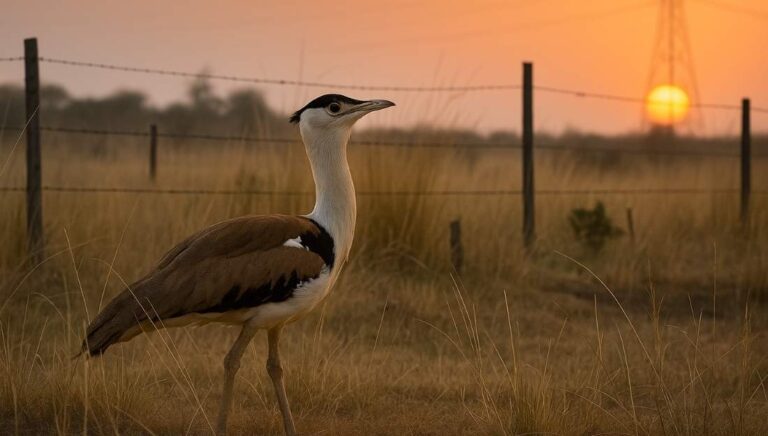Supreme Court Judge Justice P.S. Narasimha recently observed that environmental principles borrowed from Western legal systems,may not always help in protecting endangered species in India. He stressed the need for context-specific conservation models that align with India’s ecological and cultural realities.
Judicial Observations
- Justice Narasimha made these remarks during a hearing on a petition concerning the conservation of the Great Indian Bustard (GIB) and the Lesser Florican, both critically endangered bird species native to India.
- He noted that imported environmental doctrines are often anthropocentric (human-centered), focusing on human benefit rather than ecological preservation.
- He emphasized that India requires its own conservation ethics, rooted in cultural and spiritual traditions that respect all forms of life.
- The judge highlighted that captive breeding has shown limited success for these birds, implying that habitat protection and natural restoration are more effective long-term solutions.

Endangered Species
- Endangered species are organisms facing a very high risk of extinction in the near future, mainly due to habitat loss, poaching, pollution, and climate change.
- Examples in India include:
- Great Indian Bustard (Critically Endangered)
- Asiatic Lion (Endangered)
- Snow Leopard (Vulnerable)
- Ganges River Dolphin (Endangered)
- One-horned Rhinoceros (Vulnerable, but recovering)
IUCN RED LIST
- The IUCN Red List (International Union for Conservation of Nature) is the world’s most comprehensive inventory of the conservation status of species.
- It categorizes species as Extinct, Critically Endangered, Endangered, Vulnerable, Near Threatened, or Least Concern.
- The list helps governments and conservation bodies prioritize protection efforts.
Conclusion
Conservation in India must move beyond Western anthropocentric ideals to embrace eco-centric approaches grounded in Indian philosophy and traditional wisdom. Protecting endangered species like the Great Indian Bustard requires community participation, scientific management, and judicial vigilance to ensure long-term ecological balance.
This topic is available in detail on our main website.





